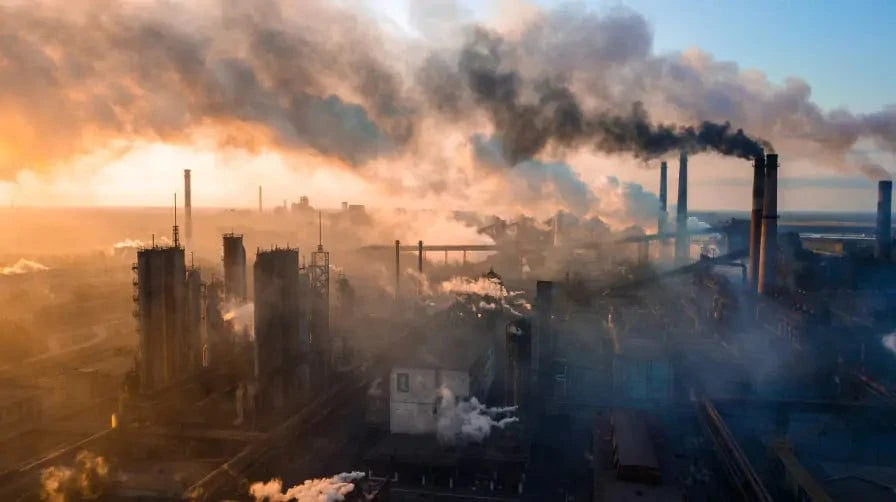Your basket is currently empty.
Shop NowIn The News: Scotland’s Household Recycling Falls

In The News: Our Look at The Top Recycling Stories Making the Headlines
Scotland’s Household Recycling Falls for the First Time Since 2011
The latest figures released by the Scottish Environment Protection Agency (SEPA) show that Scotland’s household recycling rate for 2018 has fallen to 44.7%, down from 45.5%. This is the first time that there’s been a fall in household recycling rates in Scotland since 2011.
Back then, the recycling rate was recorded as 40.1%, but rates were calculated differently. Recyclables that didn’t meet the quality standards necessary for processing and recovery were included in the total.
Paper and cardboard recycling rates fall
So what’s behind the fall in recycling rates? There has been a fall in the amount of paper and card that’s being recycled nationwide. Even though it makes up the biggest chunk of Scottish recycling, paper and card recycling rates have fallen by over 16,000 tonnes since 2017.
Plastic and glass recycling fared better. Plastic recycling rose by 5% to 56,586 tonnes last year, and glass recycling increased by 832 tonnes, or 0.8%-a modest increase, but an increase, nevertheless.
But it’s not all doom and gloom
But the news for Scotland isn’t all bad. According to the Scottish Environment Protection Agency (SEPA) figures, less household waste was generated last year. The amount of waste produced last year was 2.41 million tonnes, down 2% from 2.46 million tonnes in 2017. And if you’re interested, Scottish households generate a whopping 201,513 tonnes less household waste than they did back in 2011-something must be working!
What’s more, Scottish households sent 7% less waste to landfill than they did in 2017. If 7% doesn’t seem that much, know that it equates to over 75,000 tonnes. This means that even though recycling rates have fallen, the amount of waste being recycled exceeded the amount being sent to landfill (1.07 million tonnes and 1.03 million tonnes respectively).
So despite the fall in the overall recycling rate, the bigger picture is not all doom and gloom. Scotland is still managing to reduce the carbon impact of its household waste. SEPA figures revealed that household waste generated over 104,000 less tonnes of CO2 in 2018. The country’s household waste has been producing less CO2 every year since 2011, and this is mainly down to the introduction of the Carbon Metric.
What is the Carbon Metric?
The Carbon Metric is an incredibly useful tool that has been developed to help Scotland tackle climate change. The tool allows the carbon impact of over 30 different types of waste, which gives the government and industry key data on which materials have the most carbon impact, and where substantial carbon savings could be made.
Carbon Metric data is behind Scotland’s 33% per head food waste reduction target. Some waste materials like food waste and textile waste have a much larger carbon impact than others, so they’re often the focus of waste reduction strategies.

The picture around Scotland
21 local authorities in Scotland recorded lower recycling rates, although half of them reported recycling rates that were above 50%. East Renfrewshire came out top for recycling. It recycled 66.2% of its waste, and only narrowly pipped West Lothian to the post with its 65.2% recycling rate. Midlothian and Moray also did well, reporting recycling rates of 58.2% and 57.4% respectively.
As might be expected for Scotland’s much bigger cities, Glasgow City and the City of Edinburgh generated the most household waste. They recorded the total amount of household waste at 245,318 tonnes and 193,341 tonnes respectively. To the untrained eye, this looks like a bit of a difference, but when you look at the percentages, Glasgow has much to do to close the gap. Edinburgh’s recycling rate is 38.8% while Glasgow is languishing at 24.6%. Glasgow also has the unenviable title of being the city that sends the most waste to landfill. 68.3% of its household waste ends up on landfill sites.
In fact, the city’s recycling rate is the lowest on the Scottish mainland. Only the tiny Orkney Islands, Na h-Eileanan Siar, and the Shetland Islands recycle less.
Recycling is important, but waste prevention should take priority
Zero Waste Scotland says it has been a difficult year for recycling, mainly driven by the changes in global recycling markets, which among other things, has seen China ban imports of some materials like plastic completely. But it’s optimistic, and says that even though there has been a fall in the overall recycling rate, some local authorities are managing to achieve rates of over 60%. Food waste recycling has also risen in recent years, which largely accounts for the low carbon impact for household waste that the country has achieved.
Zero Waste Scotland’s chief executive commented that even though recycling is very important, preventing waste in the first place should still be the priority.






